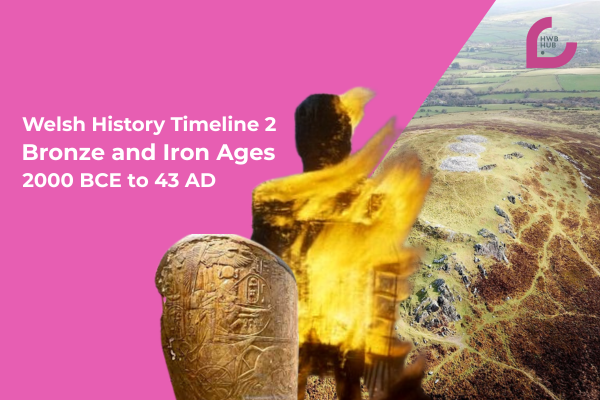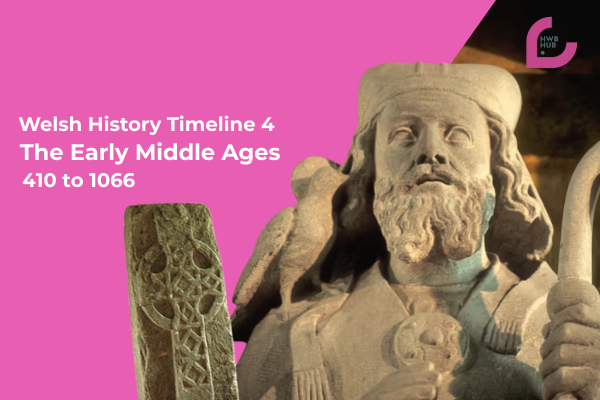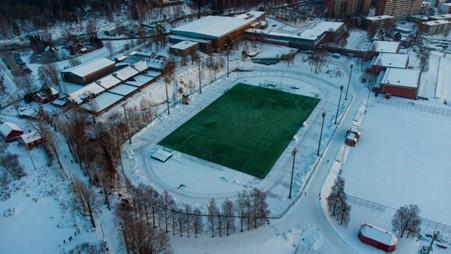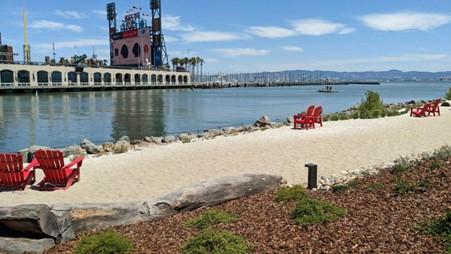Paleolithic | Mesolithic | Neolithic 33,000 BCE-2000 BCE
33,000 BCE
Earliest reliably-dated modern human burial in a land mass that is recognisably Wales, first discovered in 1823 in a cave on the Gower Peninsular near Swansea by William Buckland. After the bones of The Red Lady of Paviland were recalibrated in 2009, these Homo Sapiens bones were actually determined to be male not female, buried around 33,000 years ago.
6,000 BC
Following the end of glaciation and sea level stabilisation, Wales becomes roughly the shape it is today and is inhabited by Mesolithic hunter-gatherers.
4000 BC
The earliest farming communities become established in Wales, marking the beginning of the Neolithic period. Megalithic tombs still survive from this period, such as the Pentre Ifan dolmen in Pembrokeshire.
OVERVIEW OF THE WHOLE PREHISTORIC PERIOD IN WALES
Taken directly from the excellent but now archived BBC Wales website.
By the time the Romans arrived in Britain around 50 AD, people had lived in Wales for around 225,000 years.
Not all that time had seen continuous occupation, as icesheets moved to and fro across the north of Europe, but the hunter-gatherers of the Stone Age and the farmers of the Bronze and Iron Ages left a record for modern archaeologists to analyse.
For many decades, historians assumed that waves of population movement across Europe brought advances to this far-flung north-western corner of Europe. But modern DNA studies have shown that technological and physical developments were rather slower.
Around 225,000 BC, homo sapiens hadn't yet infiltrated Europe, so the human tooth found in the River Elwy valley in North Wales from that time was from an early proto-human, maybe an early Neanderthal.
Other, much later, Neanderthal remains have been found at Coygan Cave in Carmarthenshire. These date from about 50,000 BC.
The famous 'Red Lady of Paviland' dates from about 33,000 BC and is believed to be the oldest ceremonial burial yet discovered in Europe, but just as a society with burial customs and personal decoration was getting going in Wales, a 6,000-year-long ice age took hold.
Archaeologists now know that humans had recolonised Wales in 10,000 BC with a burial in Kendrick's Cave on the Great Orme near Llandudno. Again, this site has evidence of cultural complexity with the discovery of a geometrically-engraved horse's mandible.
The Mesolithic period of the Stone Age started in Wales at around 7,000 BC. Pembrokeshire holds some of the greatest concentrations of Mesolithic material in the UK, but sites can be found across Wales. Again there are examples of art and decaration, plus wooden structures.
The Neolithic period from 4000 BC in Wales is conventionally the period of organised farming that superceded the hunter-gatherer society. It also marked significant population growth, and a recognisable burial culture.
The Neolithic period is the first archaeological era to be visible on the surface of the Welsh landscape: chambered tombs such as Bryn Celli Ddu and Barclodiad y Gawres in Anglesey erupt out of the grass. A more subtle effect of the Neolithic period is visible too. Farming necessitated extensive wood clearing, which affected the very look of Wales until the present day.
The Neolithic period was an era still very much dependent on stone tools, but the technology was almost perfected. High-standard pottery was also present in Wales at this time. But the advent of metal-working made stone technology redundant.
From about 2,100 BC the bronze age saw copper seams in the Great Orme mined extensively. Amazing amounts of the metal were extracted from the hill, and made into bronze tools that found their way as far as northern Germany, pointing to the extensive trade links of Wales with the rest of Europe.
Cremation became more popular, but ceremonial burials were still held. A remarkable gold cape was found at Bryn Yr Ellyllion in Flintshire which dates from about 1,900 BC.
From about 1,250 BC a wetter climate led to much of the uplands of Wales becoming covered by unusable peat and population dispersal. Pressures may well have led to a move towards military defence of good land and the building of hillforts from about 800 BC.
Llyn Fawr in the Cynon Valley is the site of the discovery of the first iron implements found in Wales, from about 650 BC. Hill forts became more common with Castell Odo on the Lleyn Peninsular being the earliest.
For more a more specific article on the Stone Age go to the BBC Wales article at:
For a more specific article on Welsh stone circles and hill forts go to the BBC Wales article at:








